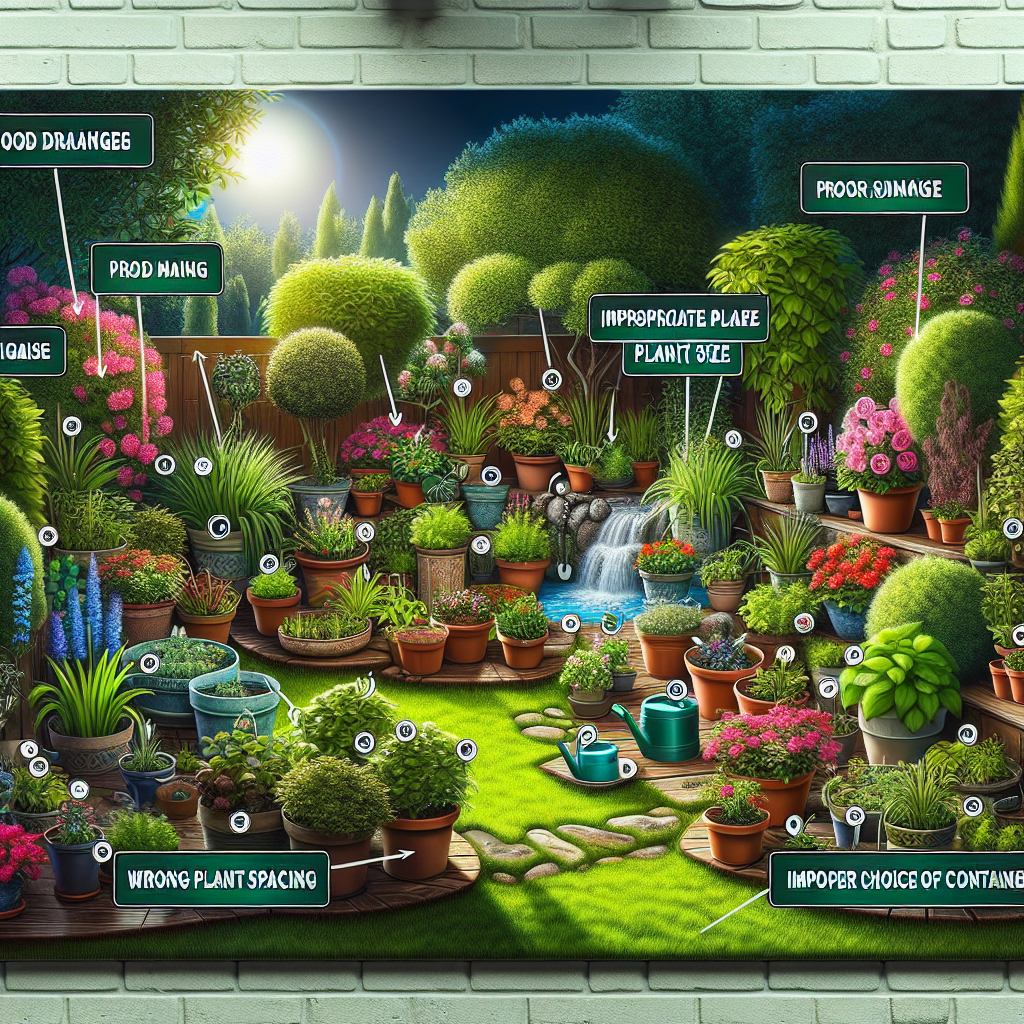Container gardening can be a fun and rewarding way to bring the beauty of nature into small spaces, whether you have a tiny apartment balcony or a small backyard. However, for beginners, there are common mistakes that can easily derail your efforts and leave you frustrated with your gardening endeavors. In this article, we will explore some of the most common mistakes that beginners make when starting out with container gardening and provide tips on how to avoid them. By following these guidelines, you can ensure a successful and enjoyable container gardening experience.
One of the most common mistakes that beginners make when it comes to container gardening is choosing the wrong containers for their plants. It’s important to select containers that are appropriate for the size of the plant you want to grow, as well as for the specific growing conditions of your space. Using containers that are too small can restrict root growth and lead to stunted plants, while using containers that are too large can cause waterlogging and root rot. Additionally, containers should have adequate drainage holes to prevent water from pooling at the bottom and suffocating the roots of your plants. By choosing the right containers for your plants, you can set yourself up for success from the start.
Another common mistake that beginners make is using the wrong type of soil for their container garden. Not all potting mixes are created equal, and using the wrong one can lead to poor drainage, compacted soil, and nutrient deficiencies in your plants. It’s important to use a high-quality potting mix specifically designed for container gardening, as these mixes are lightweight, well-draining, and rich in nutrients. Avoid using garden soil or topsoil in your containers, as these types of soil can become compacted in containers and inhibit root growth. By using a good quality potting mix, you can provide your plants with the ideal growing medium they need to thrive.
**Overcrowding Containers**
One mistake that beginners often make when starting out with container gardening is overcrowding their containers with too many plants. While it may be tempting to pack as many plants as possible into a single container, this can actually be detrimental to their growth and health. Overcrowding limits air circulation around the plants, which can lead to increased humidity levels and promote fungal diseases. In addition, overcrowded plants will compete for water and nutrients in the soil, leading to stunted growth and nutrient deficiencies.
To avoid overcrowding your containers, be sure to read the planting instructions on your seed packets or plant tags carefully and space out your plants accordingly. As a general rule of thumb, aim for about one plant per 6-inch diameter pot or one plant per square foot of space in larger containers. If you’re unsure about how many plants will fit in a particular container, err on the side of caution and give your plants plenty of room to grow.
**Neglecting Watering**
Proper watering is essential for container gardening success but is often overlooked by beginners. Overwatering is one of the most common mistakes that new gardeners make when it comes to caring for their container gardens. While it’s important not to let your plants dry out completely between waterings, it’s equally important not to overwater them either.
A good rule of thumb is to check the moisture level of your soil before watering by sticking your finger into the top inch or so of soil; if it feels dry to the touch, it’s time to water. Make sure not to let water accumulate at the bottom of your pots where it can drown roots – always ensure proper drainage by allowing excess water to escape from drainage holes at the bottom.
**Ignoring Plant Needs**
Each plant has specific requirements when it comes to sunlight exposure, temperature range,
and humidity levels – failure
to meet these needs can result in poor growth
and eventual decline
or death.
Before embarking on
a container garden,
do some research about
the specific needs
of each type
of plant you plan
to grow so that you
can create an optimal environment
for their growth.
Some may require full sun exposure,
while others may prefer partial shade;
some may thrive in cooler temperatures,
while others may require warmer conditions.
By taking into account each plant’s individual needs,
you can ensure they receive
the proper care they need
to flourish.
**FAQs (Frequently Asked Questions)**
Q: Can I reuse potting mix from previous years?
A: It’s generally best practice not
to reuse potting mix from previous years
as it may be depleted
of nutrients
and harbor harmful pathogens.
Q: How often should I fertilize my container garden?
A: Fertilize regularly during
the growing season
with a balanced liquid fertilizer
or slow-release granules,
following package instructions.
Q: Can I grow vegetables in containers?
A: Absolutely! Vegetables like tomatoes,
peppers,
lettuce,
and herbs
can thrive in containers; just be sure
to choose appropriately sized pots
and provide adequate sunlight.
By avoiding these common mistakes
and following our tips,
you’ll be well on your way
to having a thriving
container garden full
of healthy plants!
Start small,
experiment
with different combinations
of species,
and enjoy watching
your mini-garden flourish!













